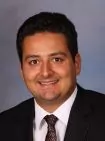The Ninth Circuit's October 8 ruling that the Bikram Yoga sequence of yoga poses and exercises is not copyrightable underscores the constitutionally based rule—embodied in Section 102(b) of the Copyright Act—that no "idea, procedure, process [or] system . . . regardless of the form in which it is described, explained, illustrated, or embodied" may be copyrighted.
The plaintiff, Bikram Choudhury, is a selfproclaimed "Yogi to the stars." As the Ninth Circuit explained, he "developed a sequence of twenty-six asanas and two breathing exercises, arranged in a particular order, which he calls the 'Sequence.'" This Sequence "is practiced over the course of ninety minutes, to a series of instructions (the 'Dialogue'), in a room heated to 105 degrees Fahrenheit to simulate Choudhury's native Indian climate." Although the individual poses and breathing exercises are not original, Choudhury claims to have developed this specific sequence of poses and exercises after "many of years of research and verification . . . using modern medical measurement techniques." He further claims that the Sequence and overall system of Hatha Yoga are "capable of helping you avoid, correct, cure, heal, or at least alleviate the symptoms of almost any illness or injury."
The defendant, Evolation Yoga, was founded by two graduates of Choudhury's Bikram Yoga Teacher Training Course. Evolation Yoga offers many styles of yoga, including "hot yoga," which Choudhury asserted infringed the claimed copyright in the Sequence. The district court granted summary judgment to Evolation Yoga, and the Ninth Circuit affirmed.
The Ninth Circuit began its analysis with the "idea/expression dichotomy." The dichotomy, which "has two constitutional foundations: the Copyright Clause and the First Amendment," holds that expression of an idea is copyrightable, but the idea itself is not. Thus, in the seminal case of Baker v. Selden, 101 U.S. 99 (1879), the Supreme Court held that a book describing a book-keeping system was copyrightable, but the book-keeping system itself was not. Similarly, as the Ninth Circuit noted, courts applying Baker "have routinely held that the copyright for a work describing how to perform a process does not extend to the process itself," including, for example, "meditation exercises described in a copyrighted manual on exploring the consciousness," "recipes contained in a copyrighted cookbook" and "a manual describing how to organize roller-skating races"—a "system for conducting races on roller skates" whose copyright was held "not [to] extend to the rules for the races themselves." Applying Baker and this precedent, the Ninth Circuit held that Choudhury's "attempt[] to secure copyright protection for a healing art: a system designed to yield physical benefits and a sense of wellbeing," is "precluded by copyright's idea/expression dichotomy."
After finding that the Sequence was an "idea," the Ninth Circuit easily disposed of Choudhury's claim that the Sequence should be treated as a compilation and was copyrightable. Because "the Sequence is an idea, process, or system" and, "therefore," "not eligible for copyright protection," the fact that it "may possess many constituent parts does not transform it into a proper subject of copyright protection." The "overarching reason for the organization of the poses and breathing exercises in the Sequence is to further the basic goals of the method: to attain '[p]roper weight, muscle tone, glowing complexion, boundless energy, vibrant good health, and a sense of well-being.'" Nor does it make any difference that the Sequence "may be one of many possible yoga sequences capable of attaining similar results," because "the Sequence is nevertheless a process and is therefore ineligible for copyright protection."
Similarly, the Ninth Circuit held that the Sequence was not copyrightable as a "choreographic work," a type of work which is expressly protected by the Copyright Act but not defined in the statute or case law. See 17 U.S.C. § 102(a)(4). The Ninth Circuit declined to adopt a specific definition of a "choreographic work," because under any definition "[t]he Sequence is not copyrightable as a choreographic work for the same reason that it is not copyrightable as a compilation: it is an idea, process, or system to which copyright protection may '[i]n no case' extend. 17 U.S.C. § 102(b)."
The decision is unlikely to have much impact on owners of copyrights in traditional choreographic works, such as musical theater or ballet, where choreographic works are expressions of aesthetic and artistic considerations and thus are protectable. This is in contrast to the highly functional body movements Choudhury was seeking to monopolize with a copyright, and which admittedly were selected based on their ability to improve people's health. The decision may have more impact in industries that skirt the line between ideas and expression when seeking copyright protection. For example, cases involving computer programs often raise difficult line-drawing issues between non-copyrightable utilitarian processes and protectable expression of ideas in programs that serve a useful purpose. See, e.g., Oracle Am., Inc. v. Google Inc., 750 F.3d 1339, 1363 (Fed. Cir. 2014) (holding Java API packages constituted protectable expression). Although it is difficult to predict how courts will apply Bikram's Yoga College outside the realm of yoga or physical exercise, the decision demonstrates the courts' continuing willingness to enforce the Constitution's and Section 102(b)'s bar on providing copyright protection to claimed works of authorship that are nothing more than utilitarian processes or systems. To obtain copyright protection, authors must limit their claims to the protection of the expression of an idea and not the idea itself, and, where possible, seek intellectual property protection for systems in the patent laws.
The case is Bikram's Yoga College of India, L.P. v. Evolation Yoga, LLC, No. 13-55763, 2015 WL 5845415, 2015 U.S. App. LEXIS 17615 (9th Cir. Oct. 8, 2015).
The content of this article is intended to provide a general guide to the subject matter. Specialist advice should be sought about your specific circumstances.

